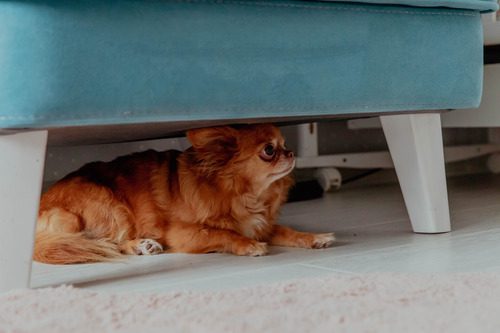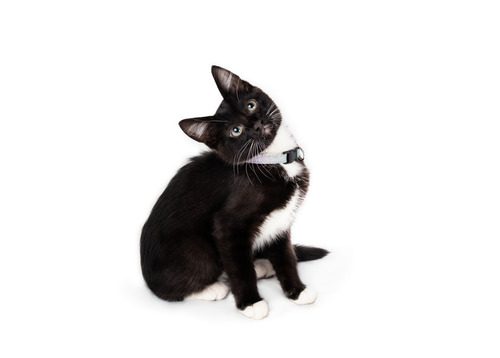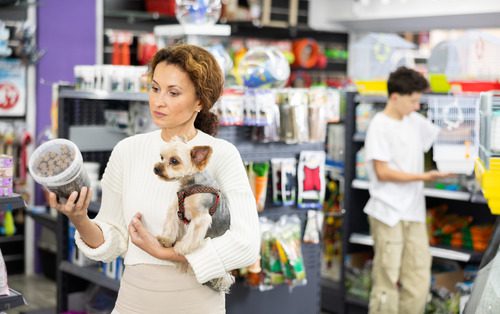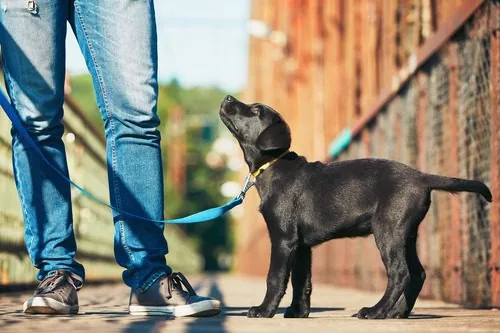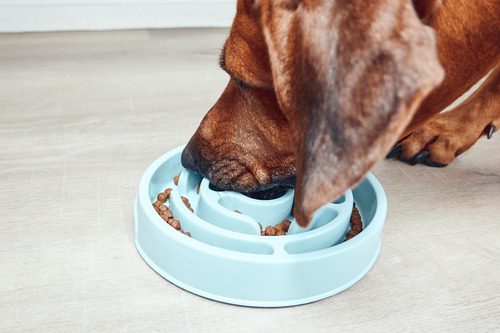How to Introduce a New Cat to a Dog
Bringing a new cat into a home with a dog can feel like a balancing act. You want both pets to feel safe, secure, and welcome—but how do you manage that first impression, and the days that follow? If you’re preparing to introduce a new cat to a dog, this blog offers practical steps to ease the transition. Your dog may be energetic, easygoing, or somewhere in between—but setting clear boundaries and moving at a pace that’s comfortable for both animals can help build a positive relationship from the start. Keep reading to explore how to introduce a new cat to a dog in a way that minimizes stress and supports harmony in your home.
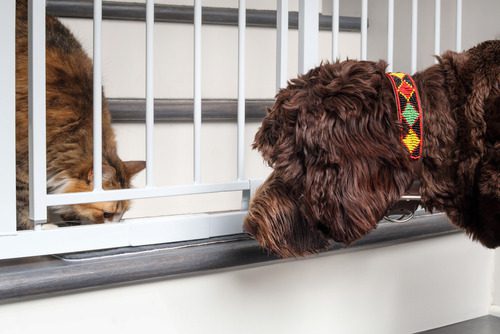
Prepare Your Home Before the First Introduction
Before your cat and dog meet, it’s important to create a secure and comfortable environment for both pets. This starts with setting up a separate space for your new cat. The room should include food and water bowls, a litter box, toys, and a cozy spot to rest. This safe space will help your cat acclimate to their new surroundings without the added pressure of meeting your dog right away.
Your dog should also have a designated area they feel comfortable in. By giving both animals their own zones, you reduce the chances of territorial behavior and help them adjust at their own pace. Take time to assess your dog’s temperament, too. Are they overly curious, anxious, or excitable around other animals? Understanding your dog’s behavior will help guide your approach in the early stages.
Begin with Scent Introduction
Animals rely heavily on scent to gather information. Before a face-to-face meeting, introduce your pets through smell. This step helps each animal get familiar with the other’s presence without direct contact.
Swap Bedding and Toys
Start by swapping blankets, toys, or bedding between your dog and cat. Let your dog sniff an item that smells like the new cat and vice versa. This process introduces each pet to the other’s scent in a low-pressure way.
Use Controlled Scent Exchanges
After the initial exchange, you can also let your dog sniff around the door to the cat’s room while the cat remains inside. Watch your dog’s body language carefully. If they stay calm and relaxed, that’s a good sign. If they bark or fixate on the door, it may be best to slow down the process.
Use Visual Contact Without Physical Access
Once both pets have grown familiar with each other’s scent, you can begin short, controlled visual introductions. Baby gates or screen doors can work well to allow sight without physical access.
Keep Sessions Short
Start with brief visual sessions—just a few minutes at a time. Monitor both pets closely and end the session if either one becomes overly stressed. Praise calm behavior and use treats to reinforce positive responses.
Increase Exposure Gradually
With each successful session, increase the time they spend seeing one another. These short moments build familiarity and help reduce fear or territorial reactions when they do eventually meet face-to-face.
Move to Controlled Face-to-Face Meetings
Once your dog and cat have handled scent and visual exposure calmly, it’s time to allow limited face-to-face interaction. Choose a neutral, quiet room where both animals can feel safe.
Keep Your Dog on a Leash
During the first in-person meeting, keep your dog leashed and calm. Allow the cat to approach at their own pace. Do not force interaction. If your cat chooses to observe from a distance, that’s perfectly fine.
Watch Body Language
Closely observe your dog for signs of excitement or fixation, like stiff posture, whining, or lunging. Likewise, watch for signs of stress in your cat, such as tail flicking, hiding, or hissing. End the session if either pet becomes uncomfortable, and try again later.
Maintain a Routine and Keep Interactions Positive
Consistency will help both your cat and dog adjust more easily. Keep your routines steady, including feeding times, walks, and quiet time for your cat. Predictability builds trust and helps reduce anxiety.
Reward Good Behavior
Positive reinforcement is key during this process. Use treats and verbal praise to reward calm behavior. Reinforce desirable actions like ignoring the other pet, walking away, or resting nearby without reacting.
Provide Daily Enrichment
Make sure both your dog and cat receive plenty of mental and physical stimulation throughout the day. Puzzle toys, training exercises, and interactive play can help reduce excess energy that might otherwise turn into frustration or fixation on the other pet.
Allow the Relationship to Develop at Its Own Pace
Every cat and dog pair is different, and there’s no single timeline for success. Some pets may start coexisting peacefully within a few days, while others take weeks or even months to feel comfortable around each other.
Respect Boundaries
Your cat may never want to cuddle with your dog—and that’s okay. Respect your pets’ individual personalities and preferences. The goal is peaceful coexistence, not necessarily friendship.
Use Tools as Needed
If you need extra help, tools like baby gates, calming pheromone diffusers, or professional behavior consultations can support your efforts. A gradual, thoughtful approach helps prevent setbacks and fosters a more successful introduction.
Building a Peaceful Multi-Pet Household
Introducing a new cat to a dog isn’t just about the first meeting—it’s about fostering a long-term, peaceful relationship. By preparing your home, observing body language, and progressing at a pace that suits both pets, you help lay the groundwork for mutual respect and comfort. While challenges may arise, patience and consistency go a long way. If you have questions or need guidance during the process, Brown Veterinary Hospital in Terre Haute is here to help. Call 812-645-0715 or book an appointment online to speak with a team that supports every step of your pet care journey.
Recent Posts
About Brown Veterinary Hospital
We are here to serve as your partner in keeping your four-legged family member healthy, ensuring you have all the tools you need to provide them with a lifetime of outstanding care. Our animal hospital in Terre Haute offers a full range of services to nurture and extend your pet’s life, from wellness and preventative care to critical care, exotic pet care, and dermatology.

